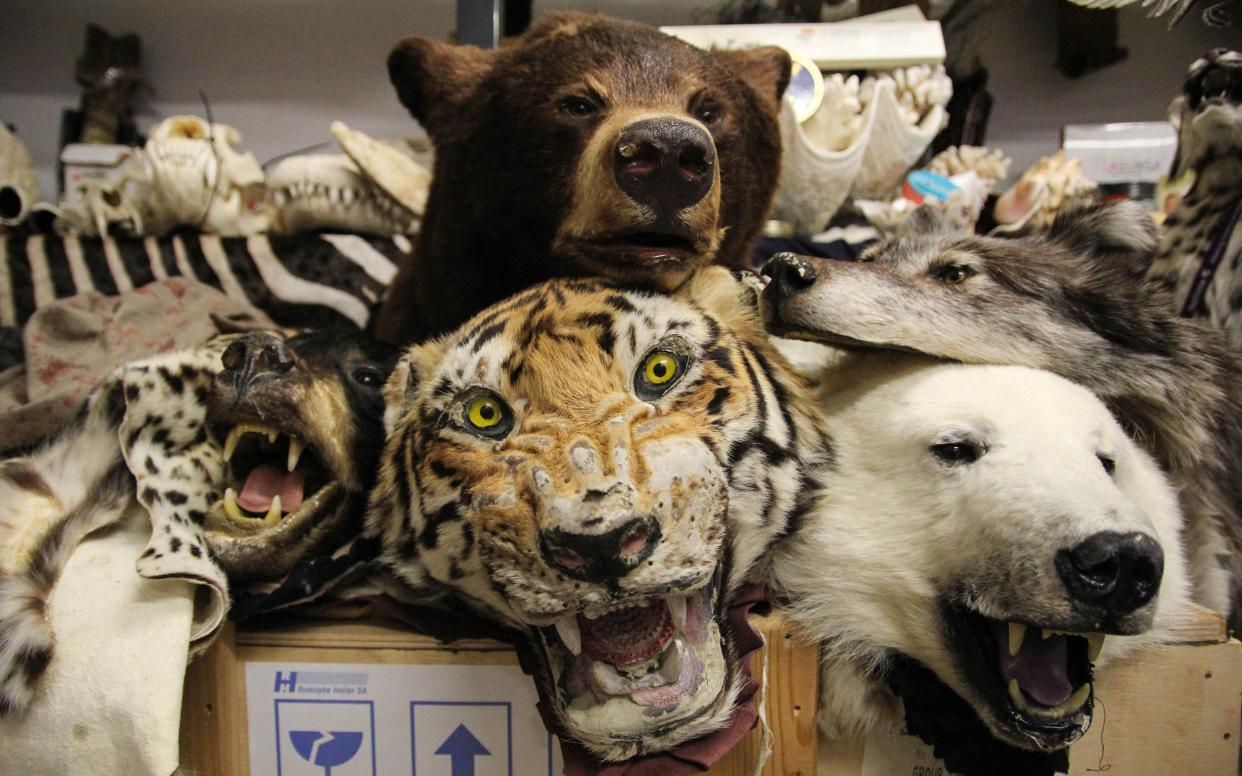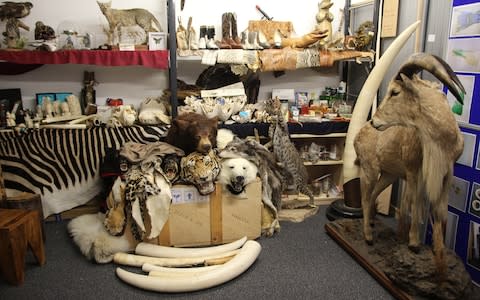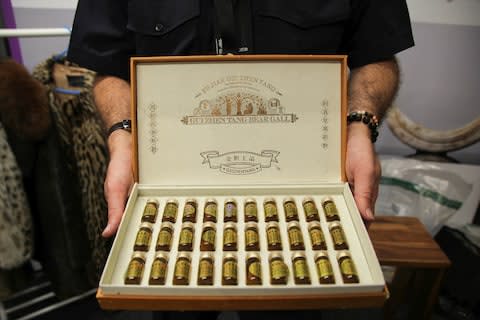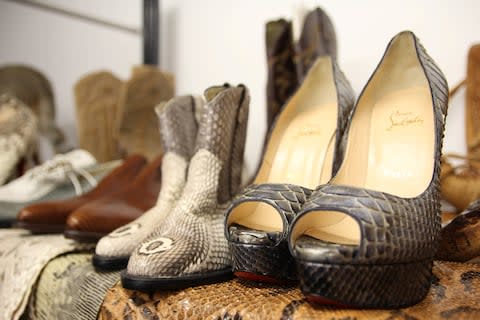Tusks, bear bile and stuffed beasts: Inside Heathrow's morbid 'Dead Shed'

While passengers mosey around Heathrow Terminal 2, preparing to board their flights, a few hundred metres away, in a musty storeroom, I’m staring into the glass eyes of a dead tiger.
Shot by hunters in a faraway land, the big cat’s cadaver was then fashioned into a rug (there’s no accounting for taste) and packed off to the UK, where it arrived without permits and was duly seized by Border Force’s CITES team (Convention on International Trade in Endangered Species).

Today the hunting trophy forms part of a macabre collection of confiscated animal items, which are displayed in a room at Heathrow Airport known as the “Dead Shed”.
Off-limits to the public, the Dead Shed looks kind of like a museum but is in fact a training facility for the CITES team, whose job it is to disrupt the illegal wildlife trade at UK borders.
Pacing around the Dead Shed, I look with morbid curiosity at the grisly artefacts, which include the severed hand of a macaque, a polar bear pelt, a stuffed bobcat, sperm whale teeth and little vials of bear bile, which would have been “tapped” from the gallbladders of captive bears in the name of Chinese medicine.

Pretty grim, but according to Grant Miller, a senior Border Force officer at the CITES team, bear bile is not the most “evil thing” in the room.
That dubious distinction, the Scotsman claims, belongs to a seemingly-inoffensive shawl, known as a shahtoosh, which is made from the neck wool of Tibetan antelopes.
“The antelope can’t be farmed so [hunters] go and wipe out a whole herd,” says Miller, passing me the shawl. “It would probably have taken between three and five antelope to make this. That’s not sustainable.”
Ivory poaching | Five facts
To make matters worse, says Miller, the wool is often traded for tiger parts on the black market.
The Dead Shed, perhaps unsurprisingly, contains plenty of elephant ivory, from carved trinkets to whole tusks. However, what is surprising is that most of the ivory intercepted by the CITES team is actually being exported from the UK.
“We don’t get much ivory coming in, but what we do get is historical ivory being exported,” says Miller. “It’s sold over online auction houses and bought by people in Asia.”

Indeed, prior to my visit, Miller’s team had identified 1,400 items of ivory for sale on eBay – and that was just in the UK.
“Historic ivory can be legally sold in the UK, but what you can’t do is export it from the UK without a permit – and there are never any permits,” says Miller, handling a giant tusk.
One of the more innocent-looking items in the Dead Shed is a guitar signed by Noel and Liam Gallagher. It’s not here because rock ‘n’ roll is now endangered, but because the fret board is made of rosewood, which, like many woods, cannot be brought into the UK without a permit.
Illegal wildlife products | Number of seizures over three months
Miller claims illegally-logged timber and unlawfully-sourced animal parts are often laundered through seemingly-reputable companies.
“Sometimes that’s because they have been duped, sometimes because they look the other way and on occasions because they are complicit,” he says. “Big companies get dragged into this.”
Indeed one of the larger items to be seized by the CITES team was a bright-yellow sports car, which a well-known car manufacturer was trying to export to California. The vehicle’s interior had been kitted out with alligator leather, which the brand hadn’t obtained an export licence for.

“The car was particularly offensive,” recalls Miller. “On that occasion we returned it to the manufacturer with a big fine.”
Most items confiscated by the CITES team are destroyed, but, where appropriate, they will be rehomed.
“We seized nine cubic metres of big leaf mahogany and donated that [to the Royal Navy Museum] for the restoration of HMS Victory,” says Miller. “It was used for the decking.”
Drugs | Number of seizures over three months
Tackling the illegal wildlife trade, Miller says, isn’t just about protecting endangered species – it’s about protecting people too.
“We lose a wildlife enforcement officer every three days,” he says. “The sacrifice they make is incredible.”
By disrupting the illegal wildlife trade, the CITES team is also making the legal wildlife trade more viable, says Miller, which helps secure jobs for millions of people.
The world's most endangered species
Looking around the Dead Shed, I find it hard not to be affected by its gruesome contents. I ask Miller whether handling deceased creatures for a living bothers him; is he an animal lover?
“No. I wouldn’t want to see harm done to an animal, but I’m not a fluffy bunny hugger,” he says, drawing my attention to the stuffed head of a black bear. “This is the same as a kilo of heroin as far as I’m concerned – it is a commodity that’s trafficked for greed.”
That might sound dispassionate, but Miller clearly enjoys his line of work and feels good that it makes a difference. “I love my job,” he says, locking up the Dead Shed. “My grandson is really proud of me.”